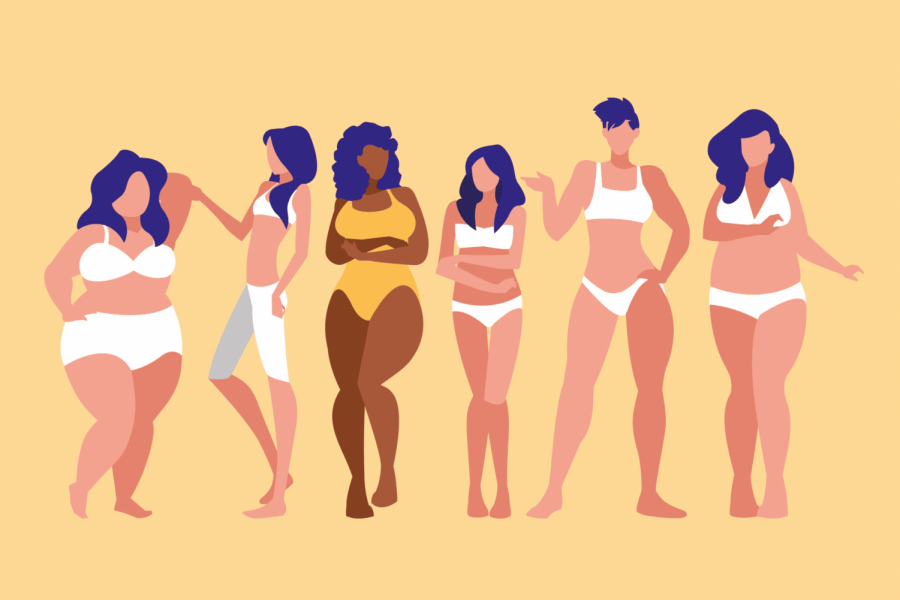Why uniforms are detrimental to the body positivity movement
Uniforms are proving to have detrimental effects to the body positive movement
School uniforms, while in principle designed to provide a heightened sense of equality and unification within communities, are in reality a leading cause of comparison and insecurity both at Castilleja, and in broader institutions. Castilleja requires students to conform to strict uniform guidelines, but given the wide variety of body types and preferences around expression, students are faced with a dilemma: either they must try to creatively “solve” for the ways in which the uniform requirements fall short, or they must live with an exterior that fails them in essential ways. In this sense, Castilleja’s required school uniform undermines Castilleja’s very mission to support and uplift each individual student.
Castilleja’s uniform requirement — which mandates that each student wear a consistent outfit of polo shirts and an above-the-knee, pleated skirt, or in the alternative, uniform-certified twill pants — is unaccommodating to the wide range of body sizes and types, which results in students often being forced to come up against the rules in finding creative ways to be comfortable and within uniform guidelines. According to an article in The Guardian about dress codes in schools, parents frequently express “frustration at their struggle to find skirts that . . . fit their daughters’ waists while fulfilling the length requirement.” So, while some resort to wearing leggings under their uniform skirts, others are forced to pin ill-fitting skirts or buy boys’ polos to find a comfortable, but conforming, fit. One Castilleja sophomore recalled that “due to [her] ill-fitting skirt, [she] was forced to sacrifice skirt-length in order to fit [her] waist size. [She] had to wear leggings underneath, in 90-degree weather, to remain fully covered and within dress code.”
Beyond sacrificing comfort, school uniform mandates have the power to isolate certain students and can result in troubling body image problems and issues with self-confidence. The sophomore who resorted to wearing leggings under her skirt shared that she felt uncomfortable with her body and the extra layers only emphasized how she was different. Students also express distress at having to show their arms and legs, which strict uniform rules and limited dress code options often require, leaving many feeling self-conscious throughout the day, exacerbating issues around negative body image and enforcing the idea that certain body types are more or less “ideal.” The underappreciation of the variety of teenage body types in mandating school uniforms undermines Castilleja’s core values of belonging and acceptance.
In my view, requiring school uniforms is simply not an equitable starting point, and despite students’ efforts to make creative (yet conforming) alterations, the outcome is never optimal. Rather than unite students, uniforms detract from community building at schools by increasing comparisons and emphasizing differences. In an NBC news interview with Robyn Silverman, a child and teen development specialist, Silverman states that “[a]s a body image expert, [she hears] from students all the time that they feel [a uniform] allows for a lot of comparison.” Due to societal and educational conditioning, those who do not fit the “ideal” body standards are taught to compare and contrast themselves with other students. Silverman goes on to express that by comparing how they look in uniforms, and ultimately comparing their bodies, students hinder their self-confidence and body-positive mindset. At Castilleja, body positivity is a key component of the wellness and SEL curriculum. The school promotes the idea that each student, regardless of body type and appearance, is entitled to feel good about their body. The school discourages acceptance of traditional societal views and expectations concerning appearance. However, rather than empowering students to feel equal and self-confident, in my view, uniforms ultimately lead to increased comparison and insecurity.

Ash Ehrenpreis '23 is a staff writer for Counterpoint. In addition to writing, you can find Ash around the circle reading, dancing and listening to a (shocking)...


